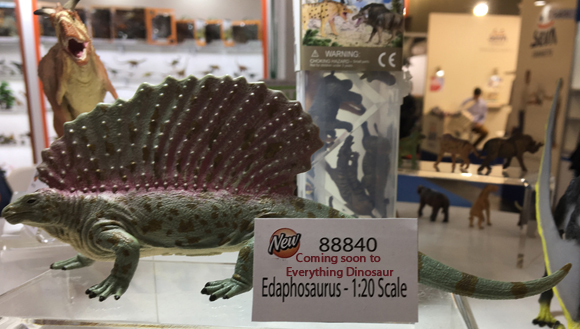South African Fossil Pelycosaur may show Parental Behaviour
Dr Jennifer Botha-Brink from the National Museum of Bloemfontein in the Free State Province of South Africa has published a paper on a remarkable fossil recovered from upper Permian strata near Fraserburg in the Northern Cape. The fossil is of a group of unknown and yet to be fully described pelycosaurs, one – assumed to be the adult, has its tail tucked around three of the four smaller animals in an almost protective posture. Could this fossil show a parent trying to protect its offspring as they perished in the Late Permian? If this is the case then this is the earliest evidence found of parental behaviour in an ancestor of mammals.
Pelycosaur
The fossil was first unearthed in 1995 from a sequence of sedimentary rocks known as the Beaufort Group, but was only recently identified as a synapsid and from the Order Pelycosauria, it has been dated to the late Permian (260 mya).
The Beaufort Group makes up a large proportion of the Karoo basin and covers the Middle Permian to the Middle Triassic periods. Many mammal-like reptiles and primitive dinosaur fossils have been found in this sequence. This area is extremely important for palaeontologists and geologists as the rock strata provides an almost unbroken fossil record covering 50 million years as the Palaeozoic gave way to the Mesozoic.
Fossils of the Karoo Basin
Ironically, pelycosaur fossils are rare in the Karoo Basin, most fossil pelycosaurs are discovered in the Northern Hemisphere (USA and Europe), this find is only the fourth pelycosaur fossil to be discovered south of the Equator. Perhaps the environment or the climate of the interior of Pangaea prevented these animals from spending across the whole of the super-continent. Pelycosaurs were certainly very successful on the western side of the Pangaea, where by the end of the Permian they made up approximately 50% of the large land animal population.
The unique position of the fossilised animals may indicate a degree of parental care in these animals – a trait that they passed onto their mammal descendants. This could be a fossil of a family group who died when they were buried together in a sandstorm. However, the corpses may have shifted position and orientation during the preservation and fossilisation process so the degree of care shown by an adult to their offspring can only be speculated upon. Indeed, there is no evidence to suggest that this is a family group, but the fossil certainly provides scientists with the opportunity to theorise on the development of a parental behaviour in early mammal-like reptiles.
Fossils that may reveal aspects of social behaviour are extremely rare, although this fossil was discovered 12 years ago, it was never completely prepared and studied, so only now is it revealing a tantalising glimpse into what may have been family life before the dinosaurs.
Studying Synapsids
Mammals and their extinct relatives are called synapsids. These animals are named after the fenestra (opening) in the skull behind the eye socket. Diapsid reptiles have two skull openings on either side. The diapsids include the dinosaurs, birds, snakes, lizards, crocodiles, marine reptiles and pterosaurs. These openings may have evolved to help anchor jaw muscles as animals developed more sophisticated and powerful jaws. In humans, this single synapsid opening has now closed up as our skull has expanded to protect our brains.
The two best known pelycosaurs are Dimetrodon and Edaphosaurus – known collectively as “sail-back” reptiles due to the arrangement of a long frill or sail that ran along their backs. Scientists are not sure what function these structures performed as the spines that support the sail are different between these two genera. However, it is commonly believed that these sails were thermo-regulatory devices helping to maintain these large animal’s body temperature in the extremes of the Late Permian climate.
A Sail-backed Pelycosaur (Edaphosaurus)
Picture credit: Everything Dinosaur
To see a scale model of carnivorous Dimetrodon: Prehistoric Animal and Dinosaur Models.







Leave A Comment